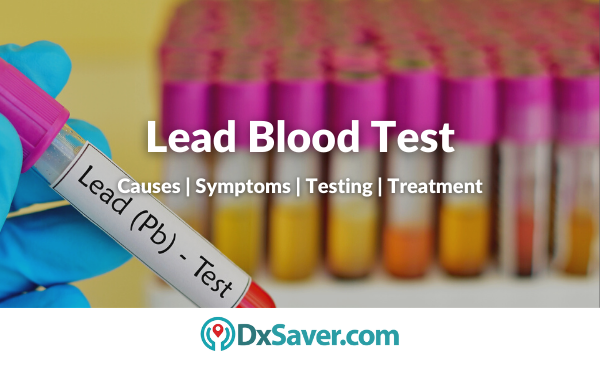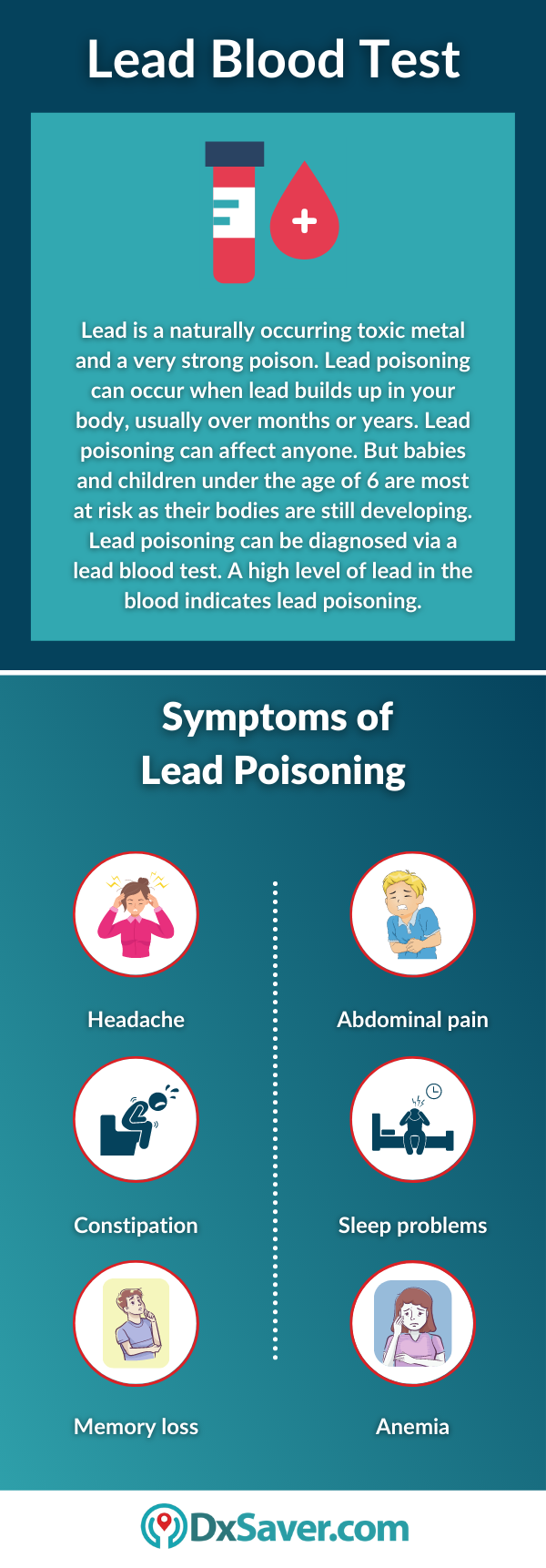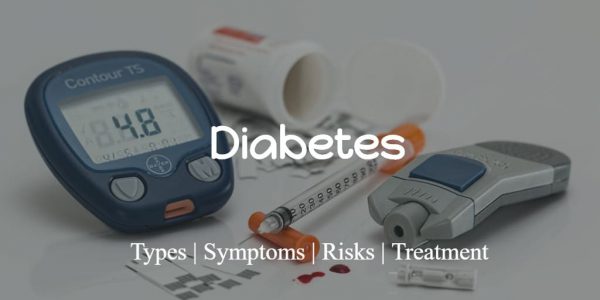
Lead is a naturally occurring metal on the Earth. It is a cumulative toxicant that can affect multiple body systems. When a person breathes in lead dust or swallows an object that has lead, some of the poison can stay in the body and cause serious health problems. Lead is particularly harmful to young children. It can affect many parts of the child’s body, including the brain, nerves, blood, digestive organs, and more. Lead poisoning can be diagnosed via a lead blood test. And the treatment for lead poisoning includes finding and removing the source of the lead to prevent further exposure.
This article covers all the significant topics related to the lead blood test such as the test cost, causes, symptoms, complications, risk factors, and how to get tested for a lead blood test.
- Lead poisoning
- Causes of lead poisoning
- Risk factors
- Lead poisoning symptoms
- Complications
- Lead blood test
- How should you prepare for a lead blood test?
- What happens during a lead blood test?
- Risk of lead blood test
- What do the results mean?
- Treatment for lead poisoning
- Prevention
- Provider locations
For our readers who are interested in knowing the lead blood test cost beforehand, we begin with that section.
How much does the lead blood test cost?
Lead blood test costs range from $48 to $53 in different labs and facilities across the US. Prior appointment isn’t required. You can order tests online by comparing the price or visiting the nearest lab during lab business hours. You will get the results in your email in 2 to 3 business days after completing the procedure. Apart from this, doctor consultation is available for any kind of further treatment or medical advice.
The table below shows the lead blood test provider and their prices. You can know more and book the test by clicking on the “Book Now” button.
Name of our Partner Labs | Book Online at Offer Price |
HealthLabs
| $48 |
Personal Labs
| $53 |
Lead blood test cost with insurance
Many insurance companies in the U.S. cover all the vital tests like the lead blood test. However, the coverage provided by private health insurance companies and national health insurance programs like Medicare varies widely. Most of the health insurance policies cover lead blood test costs only once or twice a year and when your physician orders more than twice in a year, you should pay the test cost out of pocket. So, you are recommended to check if your health insurance policy covers the lead blood test cost.
Our lead blood testing providers do not accept any kind of health insurance policy. However, they can provide you with an itemized receipt containing all the details viz the name of the test, code of the test, and CPT code which is necessary for insurance reimbursement purposes.
Lead poisoning
Lead is a naturally occurring toxic metal and a very strong poison. It is found in lead-based paints, paint on the walls of old houses and toys. And it is also found in art supplies, contaminated dust, and gasoline products sold outside of the US & Canada. Lead poisoning can occur when lead builds up in your body, usually over months or years. Lead poisoning can affect anyone. But babies and children under the age of 6 are most at risk as their bodies are still developing. And very high levels of lead poisoning can be fatal. Although damage caused by lead poisoning cannot be reversed it can be treated. Doctors recommend screening kids for lead poisoning as early as 6 months, depending on how much lead the child is likely exposed to at home or in a childcare setting.
Causes of lead poisoning
Lead poisoning occurs when you are exposed to lead by eating food and drinking water contaminated with lead. You could be exposed to lead dust when you work in an environment with lead paint or are working on a home remodel. It is important to note that you cannot smell or taste lead, and it is not visible to the naked eye. Mostly, children get lead poisoning by swallowing or absorbing lead-based paint used in houses that were built before 1978.
Other common sources of lead may include:
- Lead is found in toys and other products produced abroad
- Art supplies and paint sets
- Bullets, fishing sinkers, and curtain weights made of lead
- Jewelry and lead figures
- Some ceramic glazes can also contain lead
- Storage batteries
- Tiro, an eye cosmetic has been linked to lead poisoning
- Kohl (eye makeup) may contain lead
- Certain traditional ethnic medicines
- Soil polluted by car exhaust
- Chipping house paint
Additionally, active & passive smoking has been linked to higher levels of lead in the blood.
Risk factors
Typically, children are at the highest risk of developing lead poisoning, especially if they live in old houses with chipping paint. Because children are likely to put objects and fingers in their mouths. Though the use of lead-based paints has been banned since the 1970s, the old buildings often retain remnants of this paint. So, people who are renovating an older home are at higher risk of developing lead poisoning.
Additionally, people in developing countries are also at a higher risk. Because developing countries often have less strict rules regarding exposure to lead than do developed countries. So, when you adopt a child from a developing country, their lead levels should be checked. And lead can also harm an unborn child. When you are pregnant or planning to get pregnant, be careful to avoid exposure to lead.
Lead poisoning symptoms
At first, lead poisoning can be hard to detect, because people who seem healthy may also have high blood levels of lead. Occasionally, children and adults who have been exposed to lead have no symptoms. But when symptoms do occur, they may develop over several weeks or months.
Symptoms in children
Symptoms of lead poisoning in children may include:
- Learning difficulties
- Irritability
- Loss of appetite
- Weight loss
- Constipation
- Eating things that aren’t food (like paint chips)
- Cramps
- Hyperactivity
- Changes in behavior
- Headaches
- Vomiting
- Fatigue
- Anemia
- Brain and nervous system damage
- Speech, language, and attention deficits
- Growth failure
- Hearing loss
- Sleep problems
Symptoms in adults
Symptoms of lead poisoning in adults may include:
- High blood pressure
- Joint and muscle pain
- Difficulties with memory or concentration
- Reduced sperm count and abnormal sperm
- Miscarriage, stillbirth, or premature birth (in pregnant women)
- Infertility
- Pain and tingling in the hands and feet
- Coma
- Mood changes
- Changes in mental function
- Personality changes
- Numbness in feet and legs
- Loss of sex drive
- Headache
- Abdominal pain

Complications
Exposure to even low levels can cause damage over time, particularly in children. Whereas exposure over a long period can affect different systems in the body, including the nervous, circulatory, reproductive systems, bones, and kidneys. And it can also result in serious issues, like:
- High blood pressure
- Heart disease
- Kidney failure
- Cancer
And very high lead levels may also cause unconsciousness, seizures, and death.
Lead blood test
A simple blood test can detect lead poisoning and the sample is taken from a finger prick or a vein. A high level of lead in the blood indicates lead poisoning. Children should get tested for lead levels when exposure is suspected. Doctors may recommend that your child be tested for lead levels during routine check-ups and the testing happens at ages 1 and 2. The lead blood test is also recommended for older children who haven’t been tested.
Apart from this, people who are at risk for lead poisoning should also be tested. High-risk groups include low-income families, living in large metropolitan areas and living in older homes, especially those built before 1978.
How should you prepare for a lead blood test?
Generally, you don’t need to take any special measures to prepare for a lead blood test.
What happens during a lead blood test?
This test requires a blood sample. Your health professional or nurse uses a needle to take a blood sample, usually from the arm. So, to make the vein fill with blood and swell up, they will tie a band around the upper part of the arm. And your healthcare professional will clean the area with an antiseptic to help prevent infection. After inserting the needle, the blood will be collected into a test tube or vial.
You will feel a quick sting or pinch when the needle goes in or out. Your healthcare professional will remove the needle and band, after taking the blood sample. And they will put a piece of gauze over the spot to stop the bleeding. Generally, this blood test takes only a few minutes.
Risk of lead blood test
There is little risk in having a lead blood test. It is common to have slight pain/bruising in the area where the needle was inserted. However, the symptoms go away quickly.
What do the results mean?
The lead levels are measured in micrograms per deciliter (mcg/dL). For adults, lead blood levels up to 10 mcg/dL are normal. When the level is between 10 to 25 mcg/dL it indicates that you are regularly exposed to lead. And you may require treatment when the level is 80 mcg/dL. However, levels lower than 80 mcg/dl with symptoms may also need treatment. In children, the lead blood levels of 5 mcg/dL are considered higher than a normal or safe level. But when the level is 45 mcg/dL or higher, they need treatment to bring the level down.
Treatment for lead poisoning
Though the effects of lead poisoning aren’t reversible, you can reduce blood lead levels and prevent further exposure. The first step in treating lead poisoning is to locate and remove the source of the lead.
For more severe cases, a procedure known as chelation therapy will be used. This treatment binds to lead that has accumulated in the body and the lead is excreted in the urine. Doctors treat adults with lead levels higher than 45 mcg/dL of blood and children who can’t tolerate the drug used in conventional chelation therapy mostly with a chemical called calcium disodium ethylenediaminetetraacetic acid (EDTA), which is given by injection. However, even with treatment, it can be hard to reverse the effects of chronic exposure.
Prevention
Lead poisoning can be prevented. Talk to your doctor about ways you can prevent lead poisoning. There are certain ways to prevent lead poisoning, it may include:
- Avoid canned goods and painted toys from foreign countries
- Wash children’s bottles and toys frequently
- Instruct your child to wash their hands after playing
- Make sure to clean the floors with a wet mop and wipe furniture, windowsills, and other dusty surfaces
- Clean faucets and aerators frequently
- Use cold water to prepare foods or drinks
- Make sure to wash your hands before eating
- Use lead-free paint in the home
- Do not try to remove lead-based paint by yourself
- Avoid home remedies that contain lead
Apart from this, make sure to eat a healthy diet. Because good nutrition and regular meals may help to lower lead absorption. Children need to take enough calcium, vitamin C, and iron in their diets to help keep lead from being absorbed. And test your water for lead. When the levels are high, use a filtering device or drink bottled water.
Provider locations
A lead blood test can be done at any of our partner’s 4500+ labs located across the US. To know the lead blood test cost, refer to the first section of the article.
Frequently Asked Questions
What is a lead blood test?
A lead blood test is a laboratory test that measures the amount of lead in a person’s blood. Lead is a toxic metal that can cause serious health problems if exposure is high.
Why is a lead blood test done?
A lead blood test is typically done to check for lead poisoning, which can occur from exposure to lead in the environment, such as in paint, dust, or water. It can also be done to monitor the effectiveness of treatment for lead poisoning.
How is a lead blood test done?
A lead blood test is done by drawing a small amount of blood from a vein in your arm. The blood is then sent to a laboratory for analysis.
What do high levels of lead in the blood mean?
High levels of lead in the blood indicate lead poisoning and can cause serious health problems, such as damage to the brain and nervous system, kidney damage, and anemia.
What do normal levels of lead in the blood mean?
Normal levels of lead in the blood are considered to be less than 5 micrograms per deciliter (mcg/dL).
Other topics you may also be interested in:-
- What is the Arsenic Blood Test? – Symptoms & Treatment of Arsenic poisoning
- Fibrinogen Test Cost in the U.S.
- What is a Parathyroid Hormone?
- Symptoms of Oral Herpes STD
- Statin Panel Blood Testing in the US
- Importance of hCG Qualitative Pregnancy Test
- What is a Potassium Blood Test? – Purpose, Procedure, and Test Results
- Normal Levels of Apolipoprotein B
- Causes of Zika Virus and their Symptoms
- Rubella test – Causes, Symptoms, and Treatment of Rubella
- Myoglobin Vs. Hemoglobin
- What is the Occult Blood Test? – Test Cost, and Procedure
- What is the Thyroid T4 Test? – Purpose, Procedure, Test Cost, and Results
- Importance of Microalbumin
- Ammonia Testing Cost and Procedure






